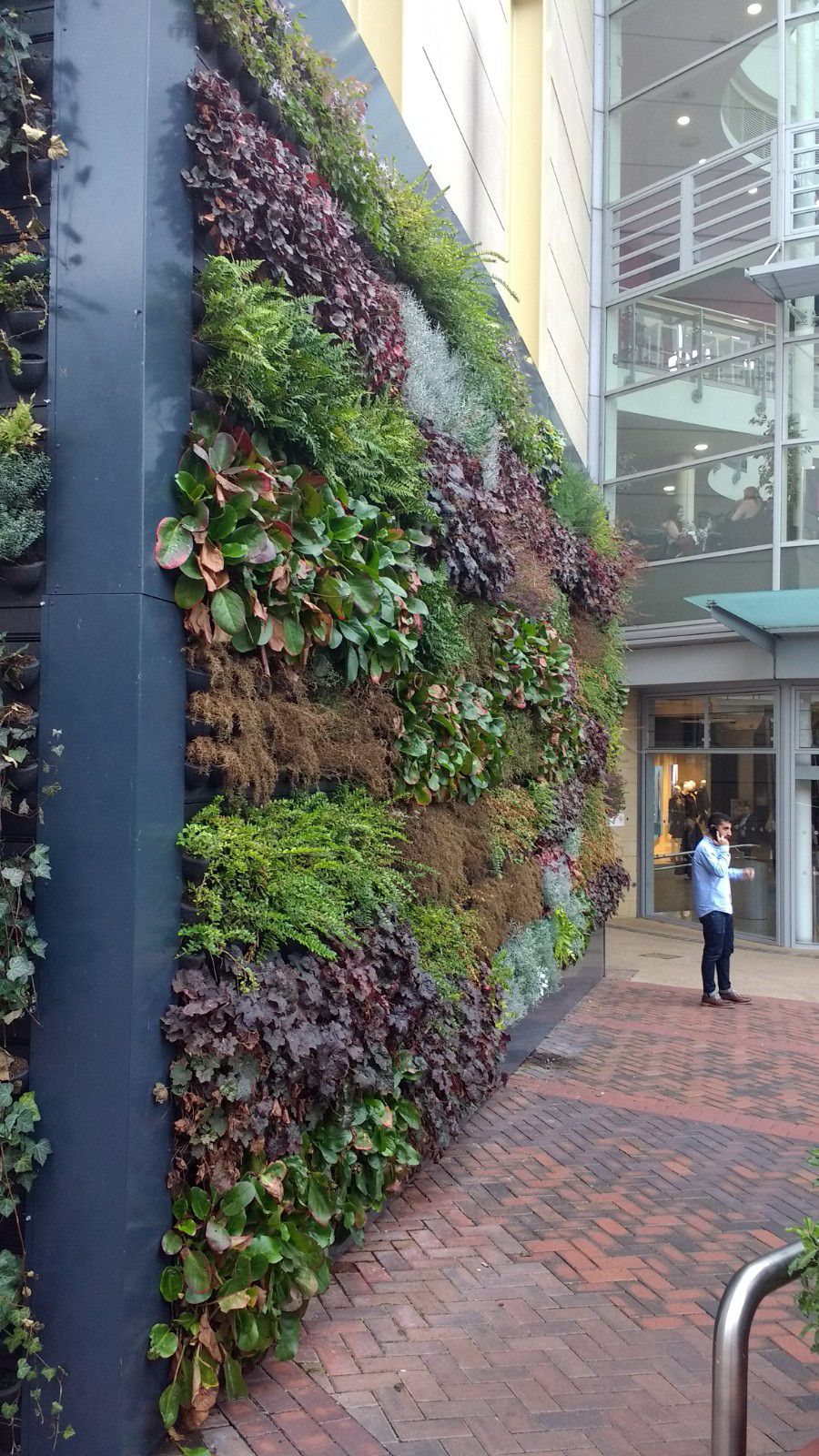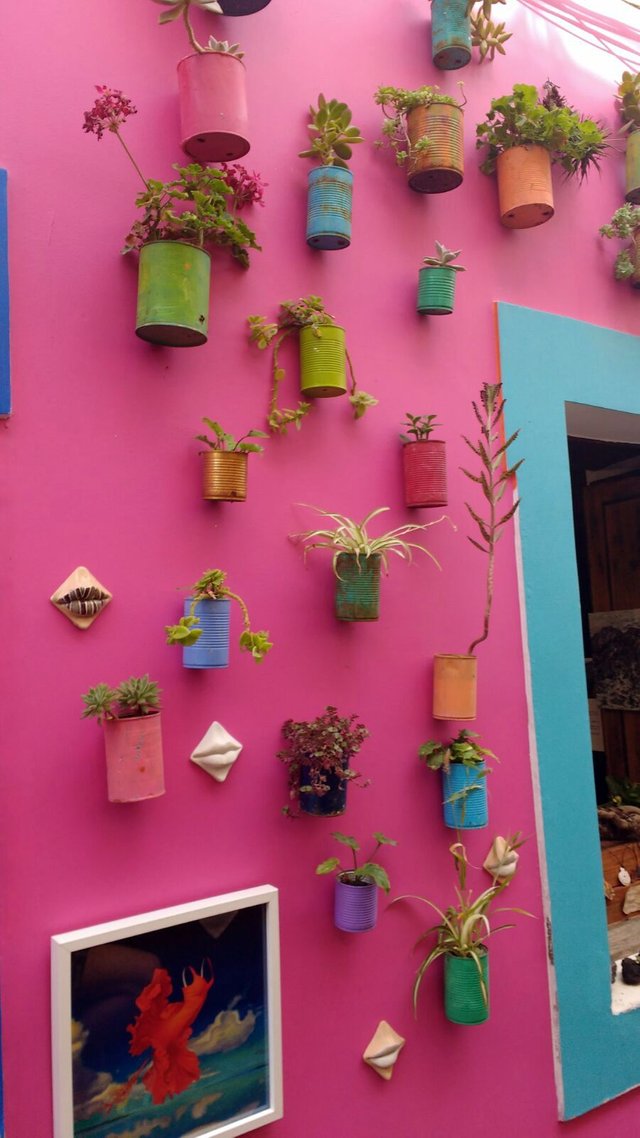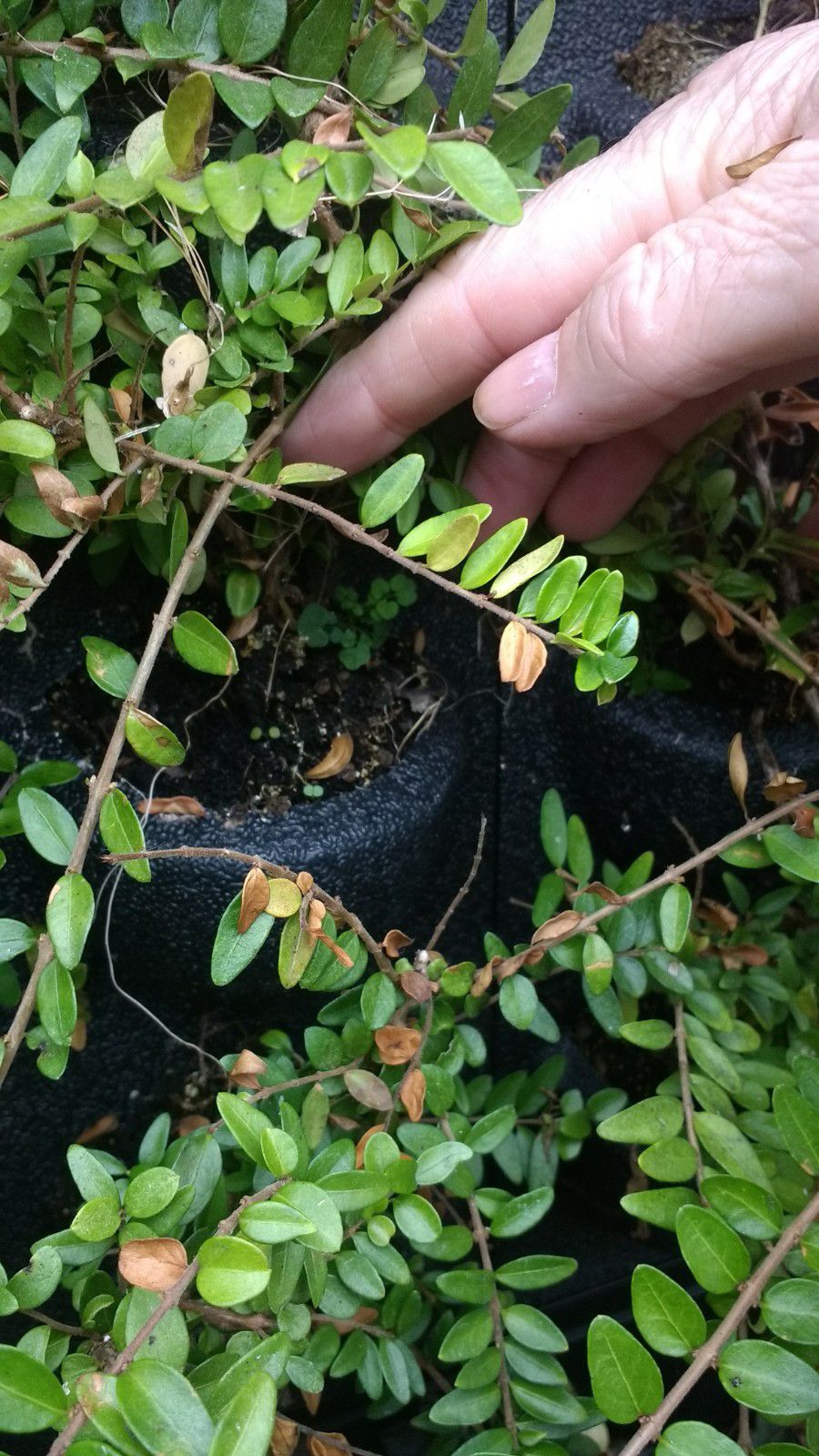
There’s no reason we have to limit ourselves to growing in the ground.
A lot of us already have plants growing in containers, hanging baskets and even old brightly painted tin cans, so there’s nothing new there. How about covering the whole wall space with plants though? It sounds a bit excessive, but the idea is growing in popularity with both businesses and individual homeowners embracing a greener future in urban areas.

Vertical gardening
I was in the town of Reading in Berkshire last week and came across a massive planting installation that covered a whole shopping centre wall. I’d say the dimensions of the vertical planted area covered the size of a tennis court and as it was a shady area was planted with ferns, bergenia, the drought tolerant barbed wire plant (Tylecodon reticulatus) and the hardy Heuchera Palace Purple. The plants are kept in place by means of small pockets; in this case they were made from modular plastic pot shaped moulds that click together. At this size the structures need to be fastened securely and most of them sit on a specially constructed galvanized metal frame that sits away from the wall to allow for ventilation.
It’s in cases like this that gardening meets high end design and incorporates the skills of not only the plants person but architects, builders and engineers. Which is great because it confirms that gardeners are in the same league as other professions and are being recognised as so. Gone are the stuffy days of the public thinking professional gardeners sit in their potting sheds smoking a pipe and will work all day for the price of a bag of chips. Hopefully these types of innovations will attract a new generation of modern gardeners who will ‘green up’ our built up urban towns and cities.
The structures are designed to actually protect walls. Modern materials such as plastics can have a shorter lifespan when the suns UV light hits them and constant heating and cooling could cause cracking. Because of the gap between surfaces there’s no problem with damp or structural damage you would get with something that clings to the wall such as ivy or is fastened by wires.
These types of wall covers don’t come cheap though, the average price of a commercial wall such as this could cost you up to €500 per square metre. The companies claim the plant covers could triple the lifespan of the walls so this offsets at least a part of the cost. Plants will need replacing from time to time but if they are chosen correctly and given just the right amount of water and feed, there’s no huge cash outlay after they have been installed – apart from paying an abseiling gardener. Rooftop rainwater collection could feed the plants by inertia drip feed cutting down the need for electrical pumps.
The designs are used to good effect indoors too and have the same principle of allowing air to pass behind them sparing the wall any damp. There are some massive corporate ones but we can make our own out of something as simple as a picture frame and a bit of old cloth made into pockets, which would be an ideal home for succulents.
There’s no need for us to be plashing the cash on huge planting schemes. There are products on the market that can be hung on the wall and planted up. If you imagine one of those sheets full of pockets that hang on a bedroom door to put rubbish in and triple the price you will get the idea. The increase in price is because the material has to be thicker. There are solid plastic type holders you can get as well. These click together to make the wall covering as large as your pocket will allow (these cost about €20 for three pots) so I’d say it’d cost you a mortgage to cover the front of the house. The main issue I can see with these small home DIY kits is the lack of air circulation behind them. It could be a mould problem waiting to happen so the solution could be to attach them to wooden batons.

Let’s assume we have covered the front of the house and the interior walls with decorative plants, but how about the idea of a ‘vertical allotment’ where we can grow our edibles in confined spaces, ideal for the city dweller that only has a balcony? I think it could easily be possible to get a healthy crop of salads plants. I’m not sure about main crops such as carrots, peas and spuds but I should think you would have fun experimenting.
I write gardening articles for a local newspaper and put them on my blog. Inishindie GARDEN MATTERS You can check it out here : https://inishindiegardenmatters.blogspot.co.uk/ Cheers!!!
Hi! I am a robot. I just upvoted you! I found similar content that readers might be interested in:
https://inishindiegardenmatters.blogspot.com/2017_10_31_archive.html
Downvoting a post can decrease pending rewards and make it less visible. Common reasons:
Submit